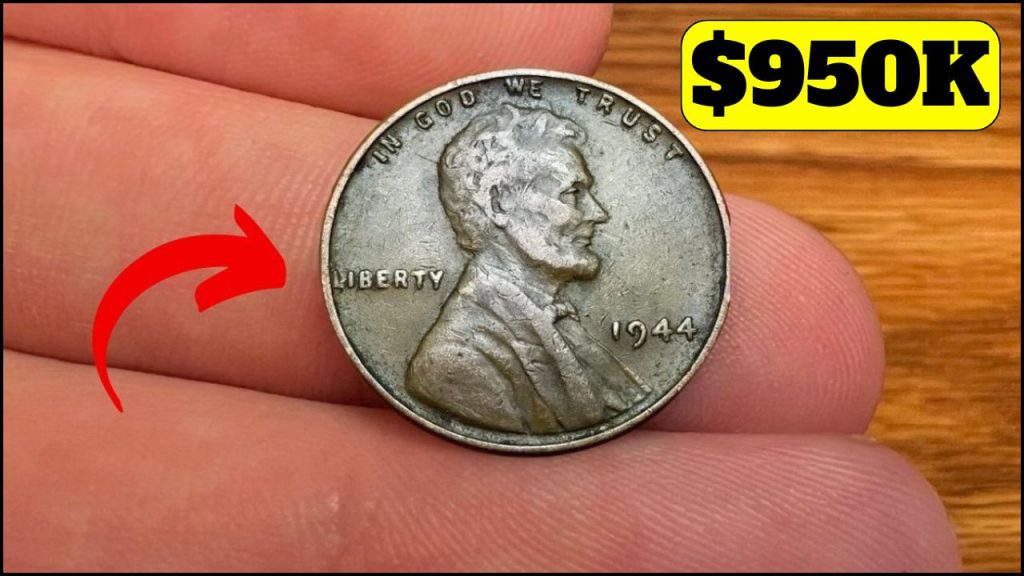
In today’s world of credit cards, mobile payments, and digital wallets, coins often feel like a thing of the past. They sit at the bottom of purses, rattle around in car cup holders, or get dropped in tip jars without a second glance. But believe it or not, some of those pennies could be hiding a surprise — like being worth nearly a million dollars.
Yes, you read that right. Some versions of the Lincoln Wheat Penny, a coin that many people still have in old piggy banks or jars, could be worth as much as $950,000. Even crazier? These rare coins might still be floating around in regular circulation.
So how did a simple one-cent coin become such a treasure? Let’s dive in.
A Penny with a Story: The Birth of the Lincoln Wheat Penny
The Lincoln Wheat Penny first hit the scene in 1909, introduced during President Theodore Roosevelt’s time. It was created to mark the 100th birthday of Abraham Lincoln, the 16th President of the United States. This was a big deal because it was the first U.S. coin to feature a real person, replacing the usual image of Lady Liberty.
The design was done by a talented sculptor named Victor David Brenner. On the front (or “obverse”) of the coin, you’ll see Lincoln’s side profile. On the back (or “reverse”), there are two stalks of wheat surrounding the words “ONE CENT” and “UNITED STATES OF AMERICA.” These wheat stalks symbolized America’s strong farming roots.
The coin remained in use with this design until 1958, when it was replaced with the Lincoln Memorial design that many people recognize today.
What Makes a Penny Worth $950,000?
Most Lincoln Wheat Pennies aren’t worth more than a few cents over their face value. But a handful of them are extremely rare — and that’s what gets collectors excited.
Here’s what gives some of these pennies their sky-high value:
1. Minting Mistakes
Sometimes, during the coin-making process, small errors occur. These “mistake coins” can include things like:
- Double printing (called a “double die”)
- Off-center strikes
- Coins made from the wrong metal
Collectors love these kinds of errors because they’re so rare.
2. Limited Production
In certain years, especially during times like war or economic downturns, fewer pennies were produced. That means fewer still exist today — and scarcity always drives up value.
The Lincoln Wheat Penny Valued at $800K, Still Found in Circulation
The Lincoln Wheat Penny Valued at $13 Million, Still in Circulation?
The Rare Lincoln Wheat Penny Worth $17 Million, Still in Circulation?
The Most Valuable Lincoln Wheat Pennies
If you’re curious about which pennies are considered the most valuable, here are a few to keep your eyes open for:
1. 1943 Copper Penny
During World War II, the U.S. government needed copper for the war effort, so they made pennies out of steel instead. However, a few copper blanks (used in 1942) accidentally got used in 1943. Fewer than 20 of these are known to exist today.
These are known as the 1943 Copper Pennies, and collectors go wild over them. One of these coins in perfect condition could fetch over $950,000 at auction.
2. 1909-S VDB Penny
This was from the first year the Lincoln Wheat Penny was made. Victor Brenner had placed his initials “V.D.B.” prominently on the back. Some people didn’t like this, so the initials were quickly removed. But not before about 484,000 coins with the initials were made at the San Francisco mint.
If you find a 1909-S VDB penny, you’re looking at thousands of dollars, if not more.
3. 1955 Double Die Penny
This one is a true collector’s favorite. In 1955, a small number of pennies were made where the die (the stamping tool) was misaligned. The result? A very visible double image on the date and lettering.
This error is easy to spot with the naked eye and can be worth $1,000 to $15,000 or more, depending on its condition.
How to Spot a Rare Penny?
So, how do you know if your penny is special?
Here’s a quick checklist to help:
- Check the Date
Some years are more valuable than others. Look out for:- 1909-S
- 1909-S VDB
- 1914-D
- 1922 (no mint mark)
- 1931-S
- 1943 (made of copper, not steel)
- Look for a Mint Mark
On the front of the coin, below the date, there may be a small letter:- “D” = Denver
- “S” = San Francisco
- No letter = Philadelphia
- Check for Errors
Look closely for odd features: double letters, strange shapes, or anything that looks out of place. - Use a Magnet for 1943 Pennies
Real 1943 pennies were made of steel and will stick to a magnet. If yours doesn’t — and it looks like copper — you may have hit the jackpot.
Final Thoughts
It’s wild to think about, but that little penny in your change jar might be worth hundreds, thousands, or even nearly a million dollars. While most pennies are just pennies, rare ones like the 1943 copper or the 1909-S VDB are still out there — and could still be hiding in someone’s pocket, drawer, or couch cushion.
So next time you get some change back from the store, take a second look. You might just be holding a piece of history — and a fortune.